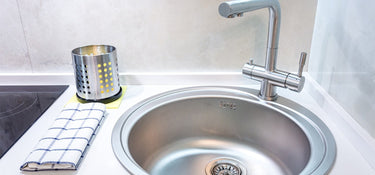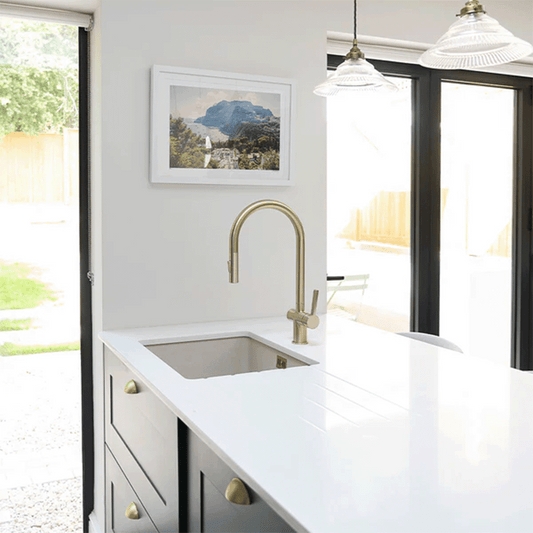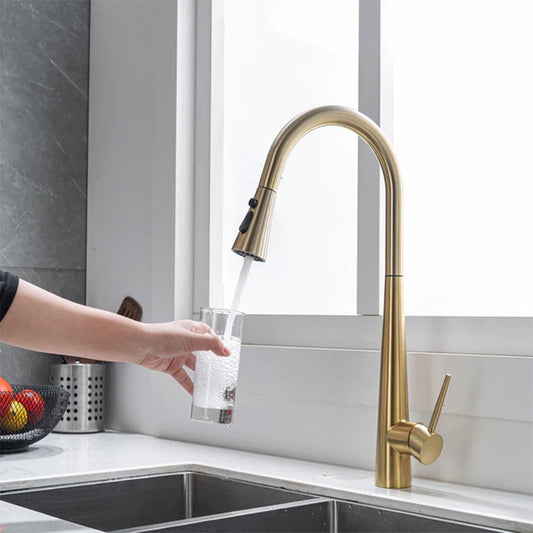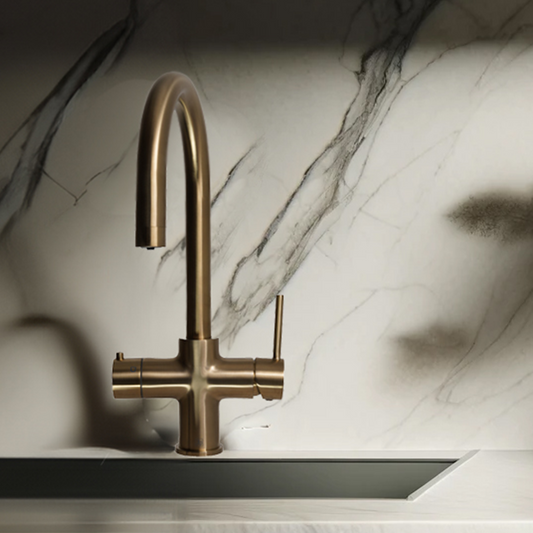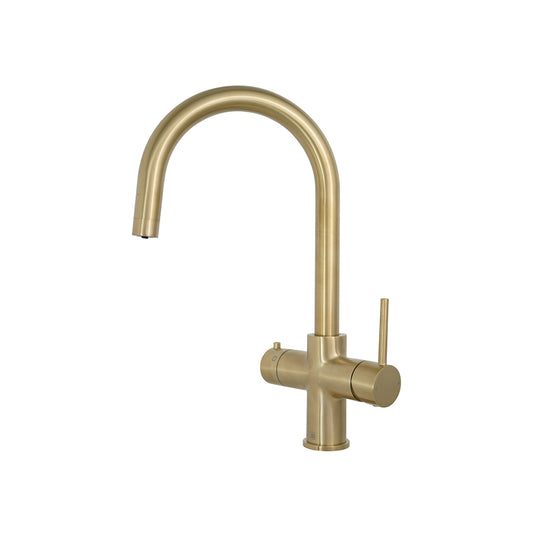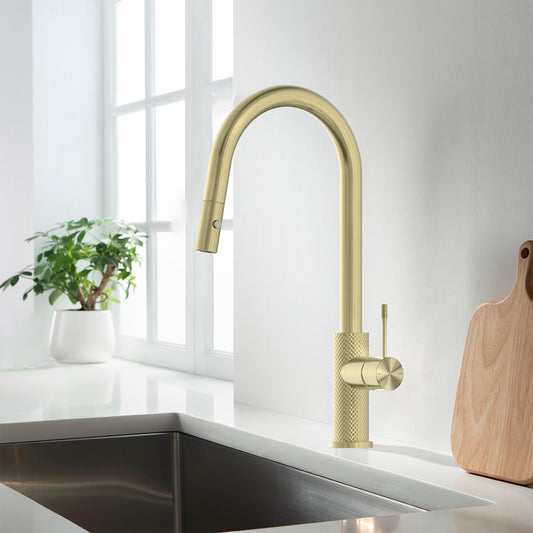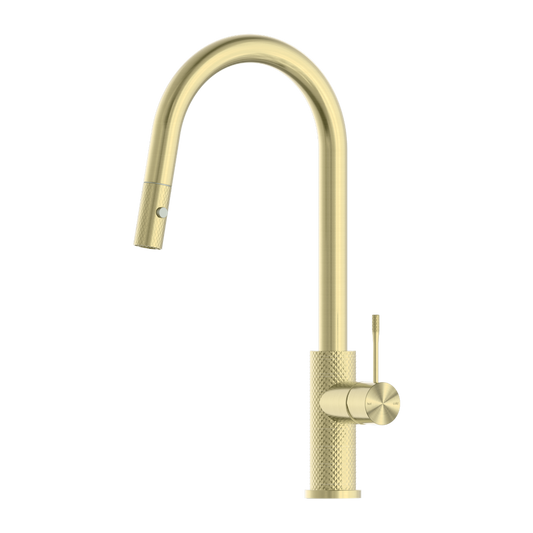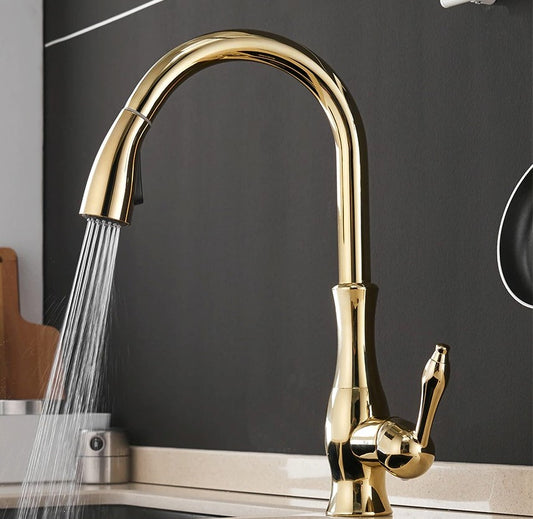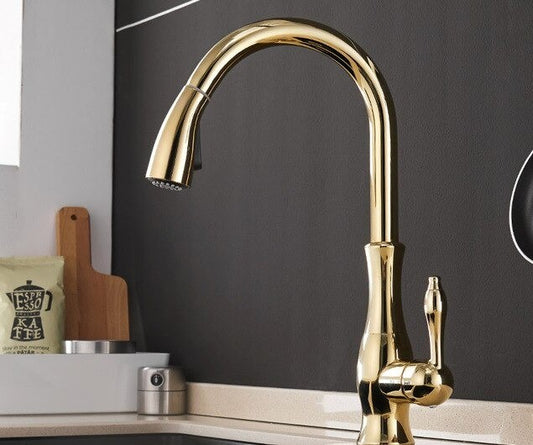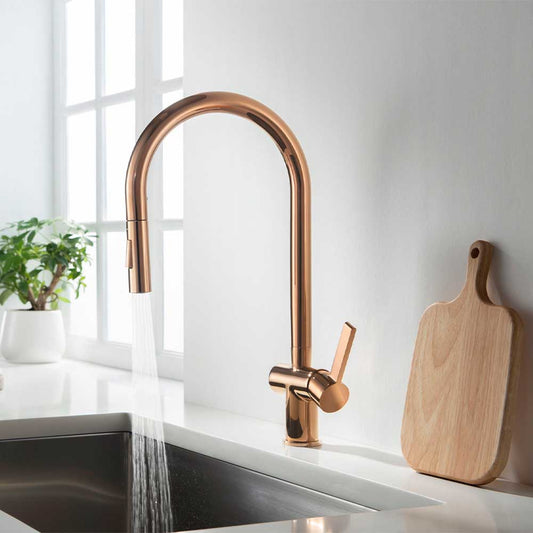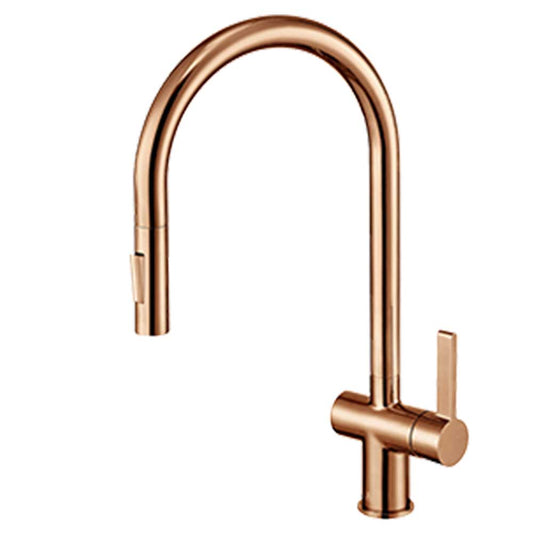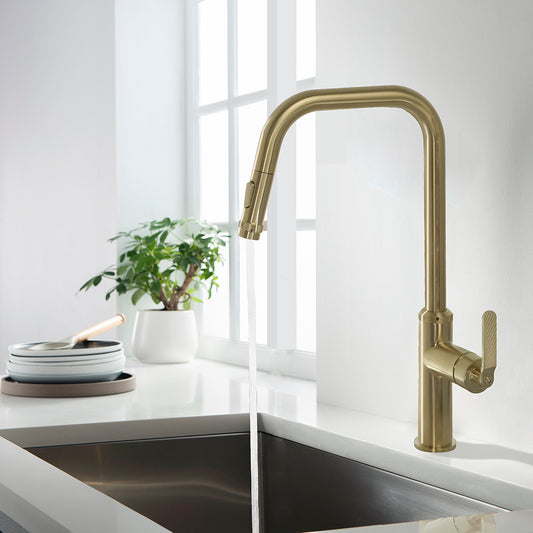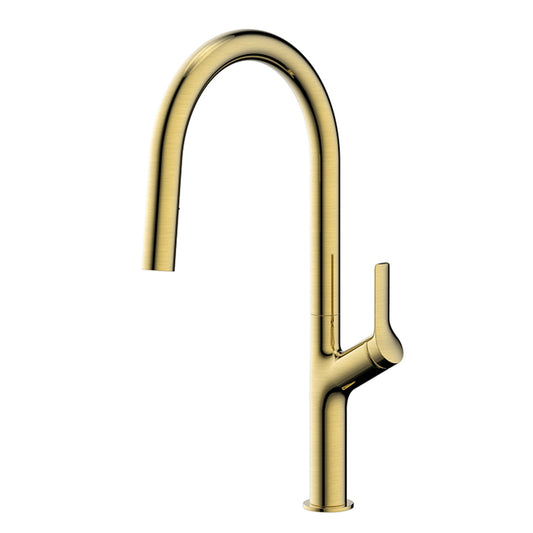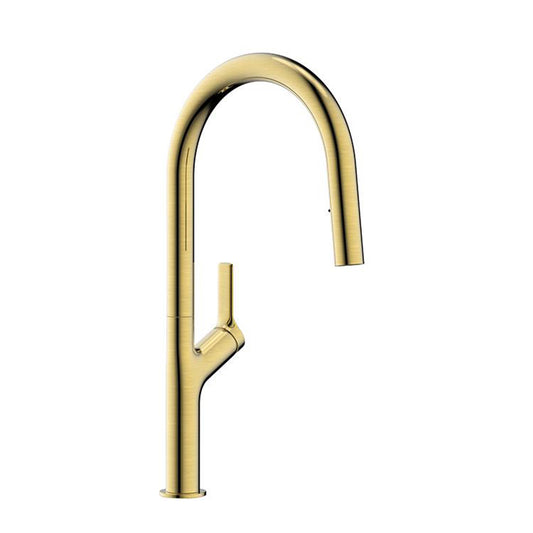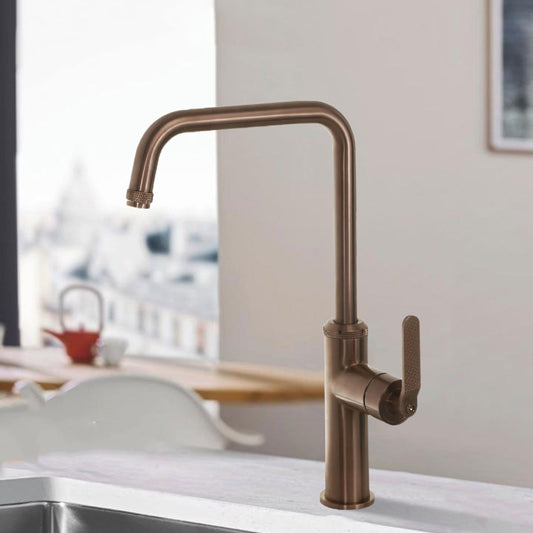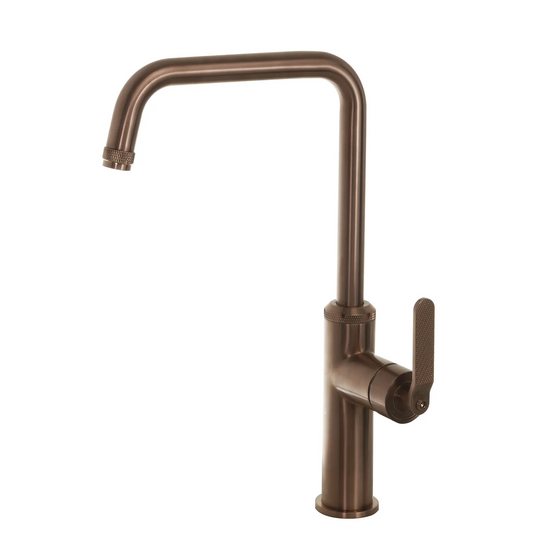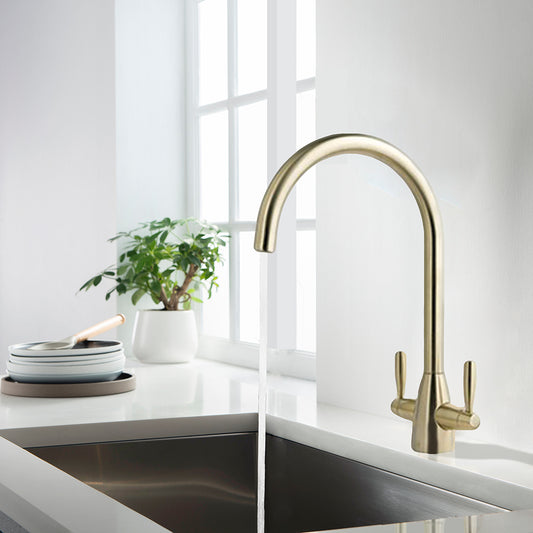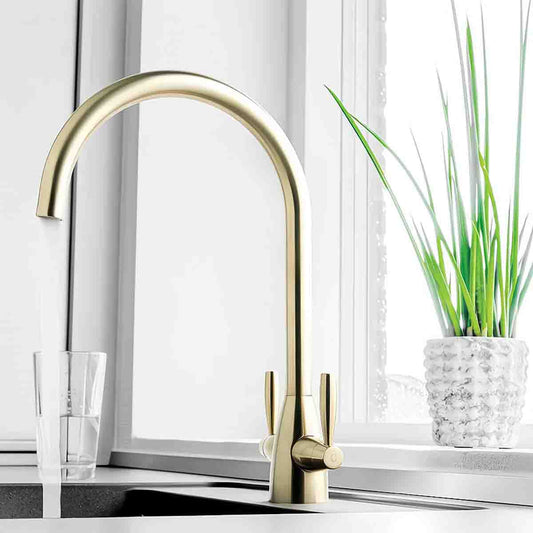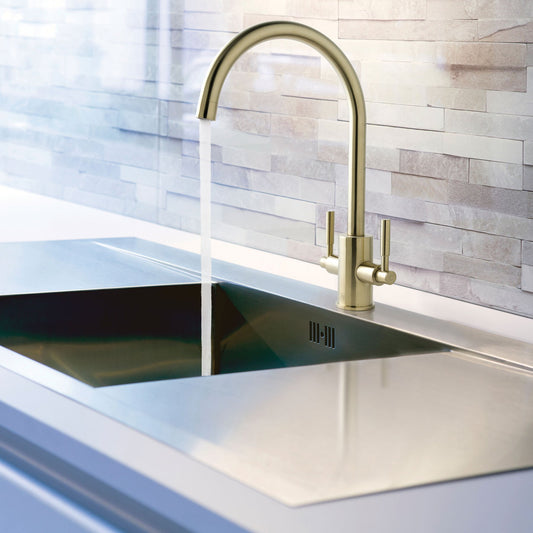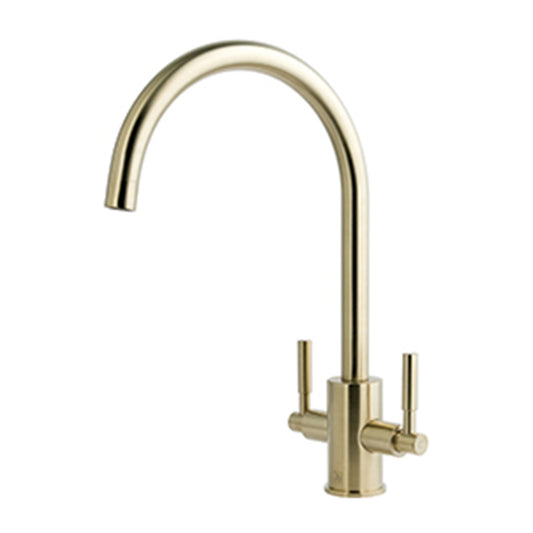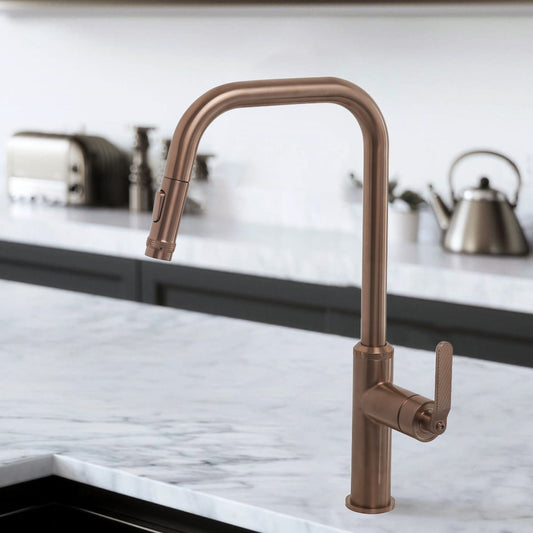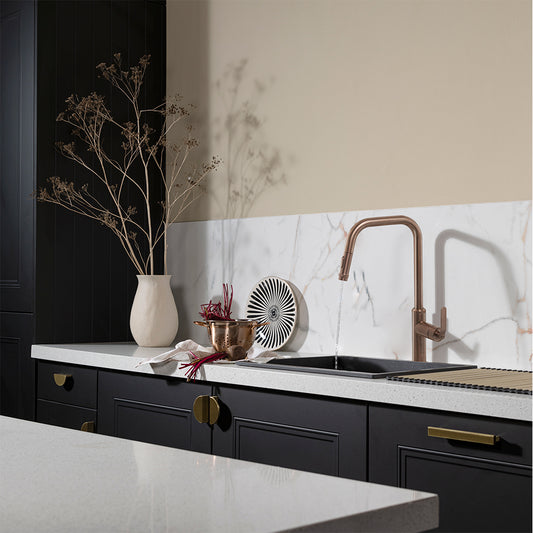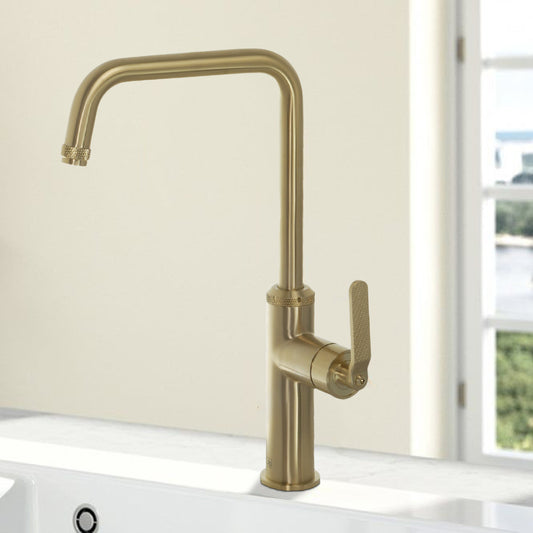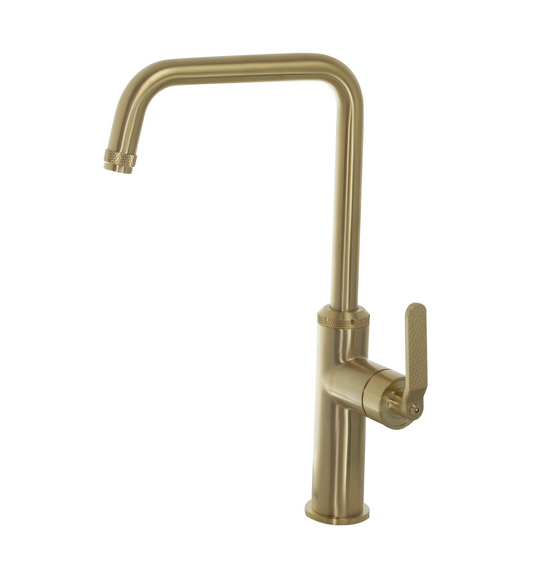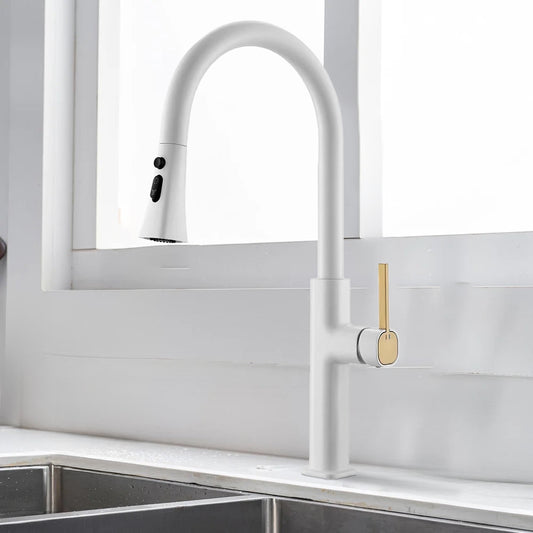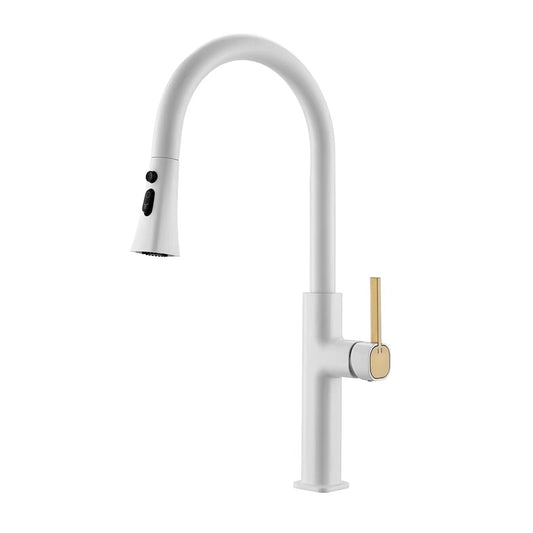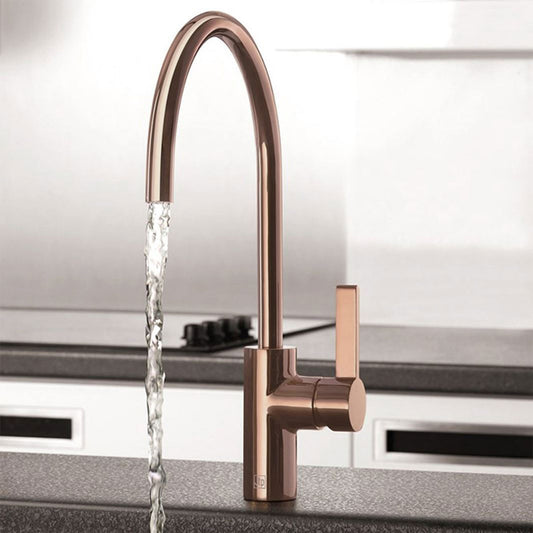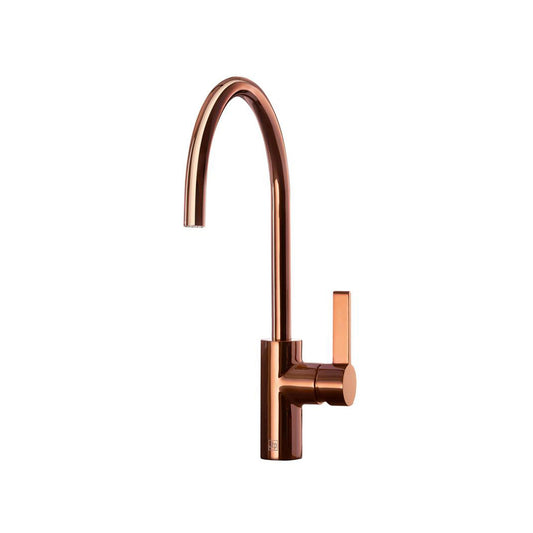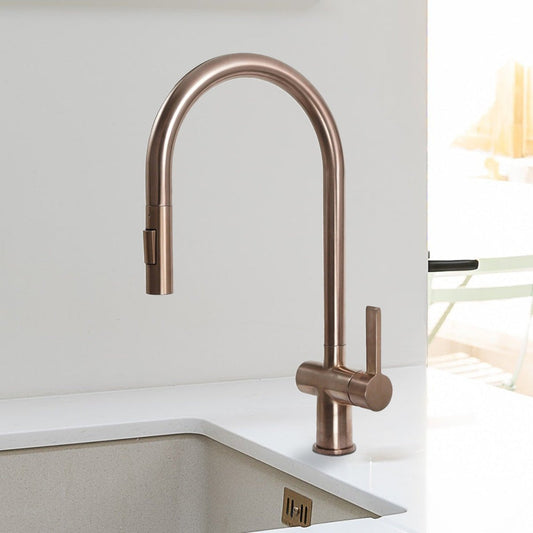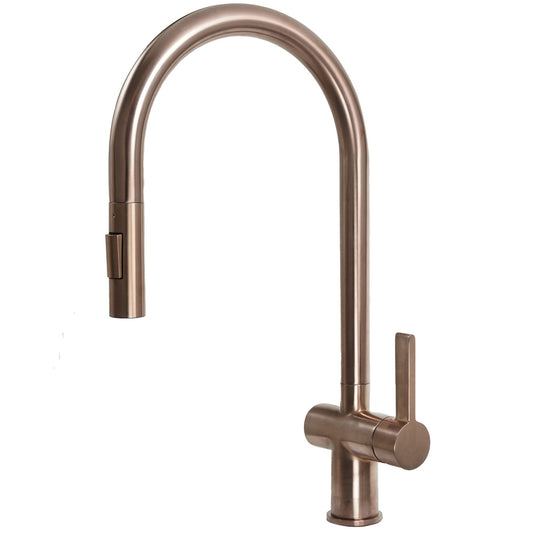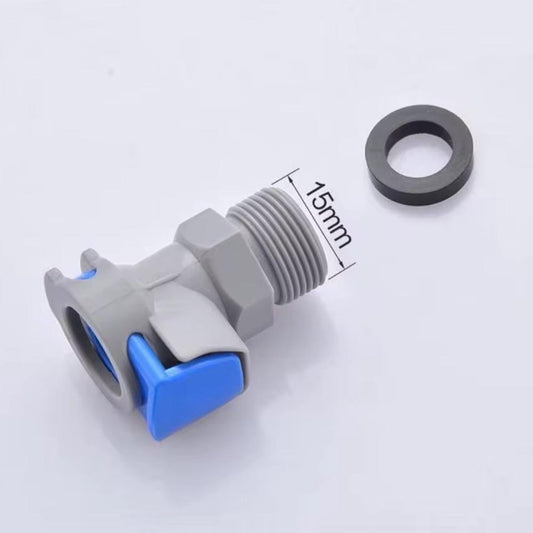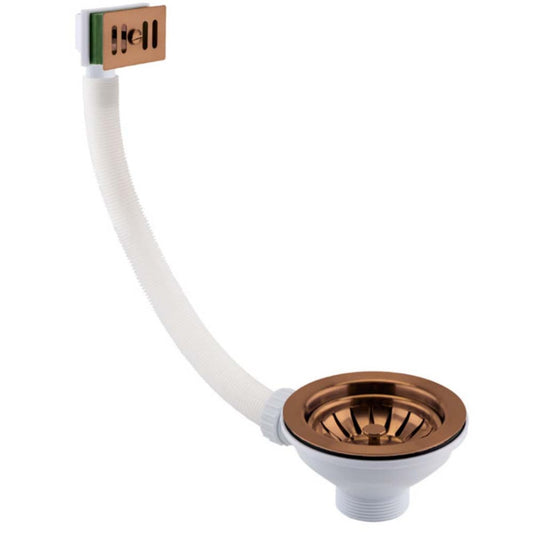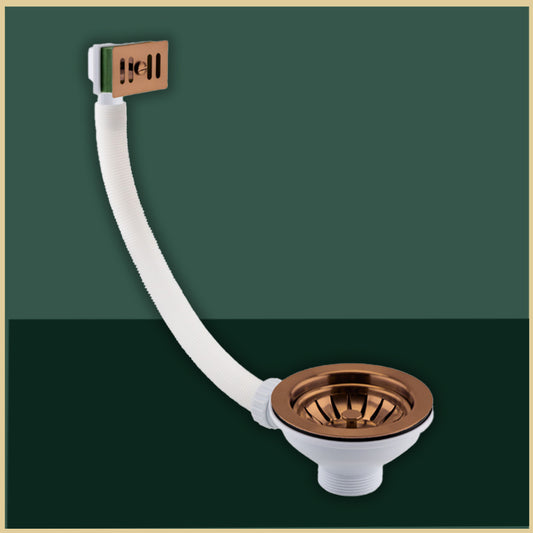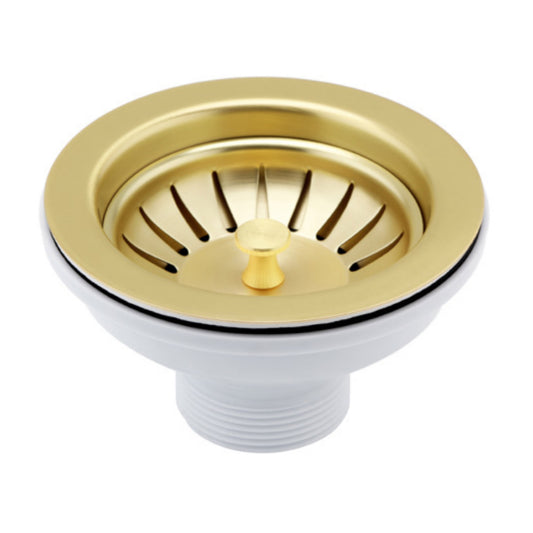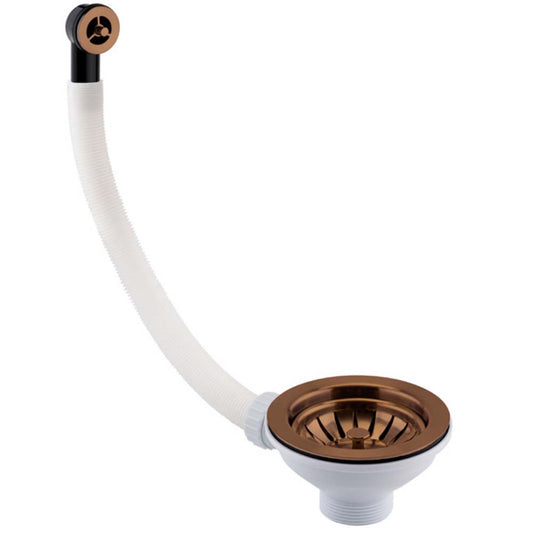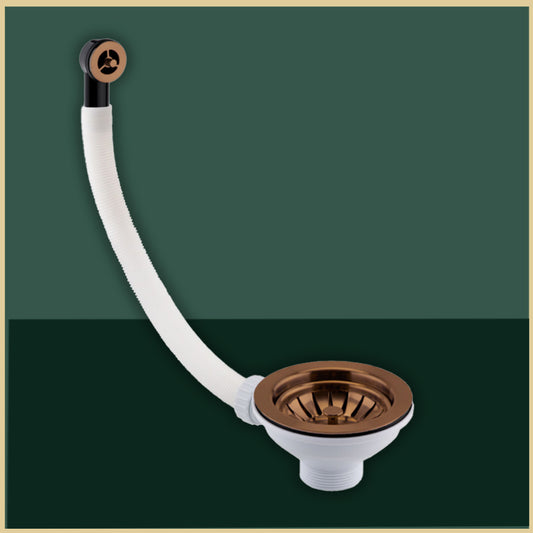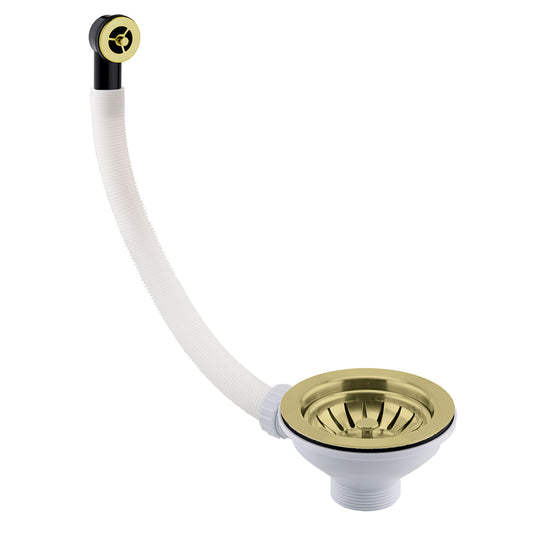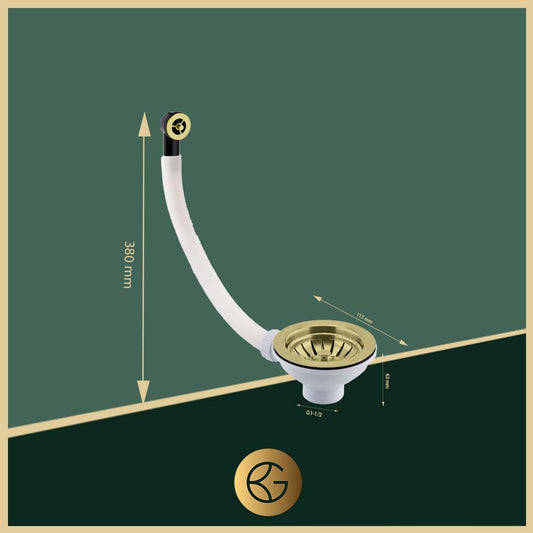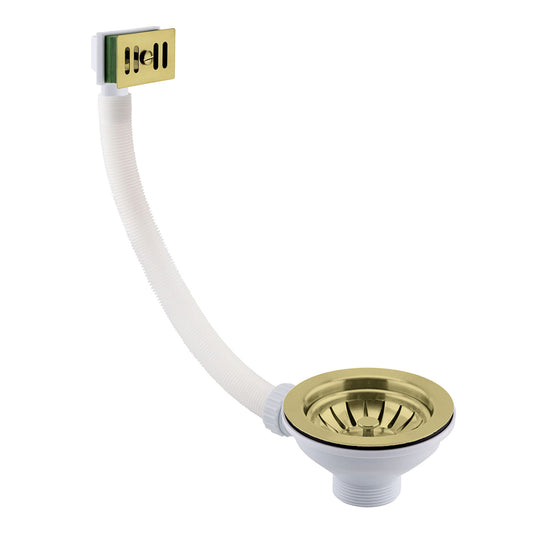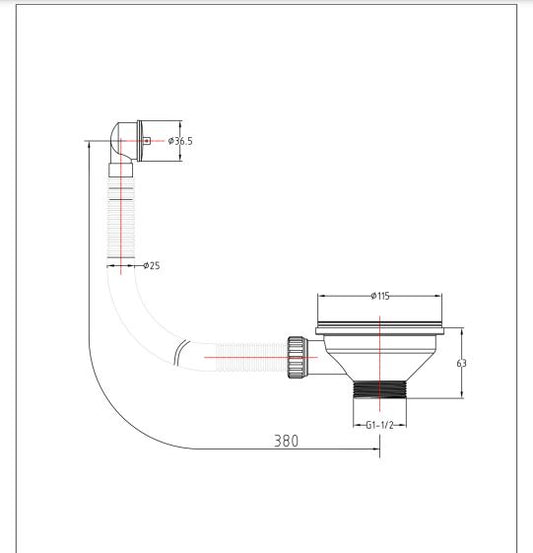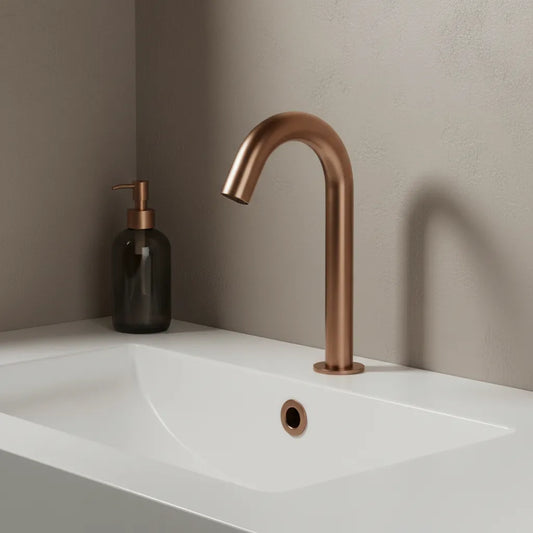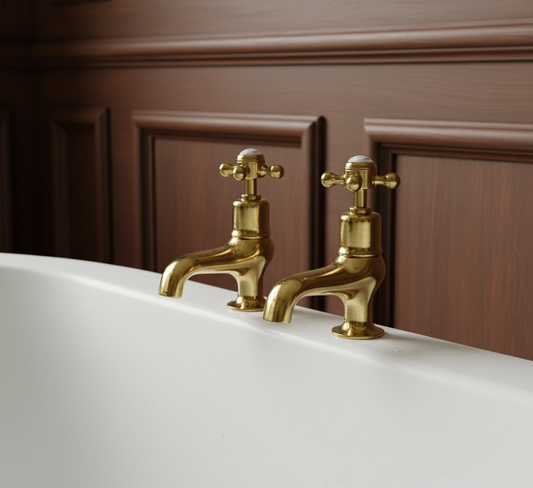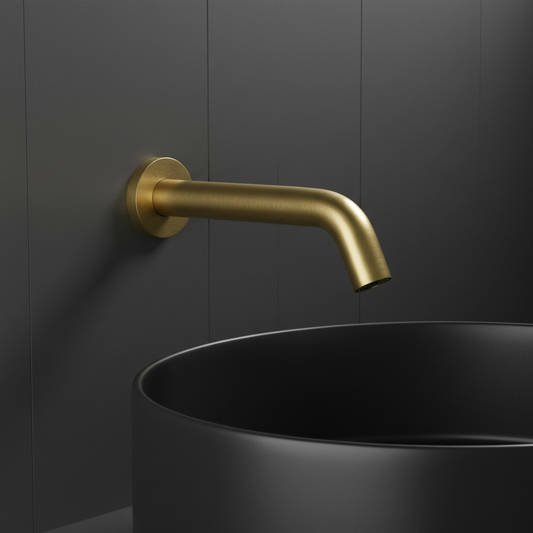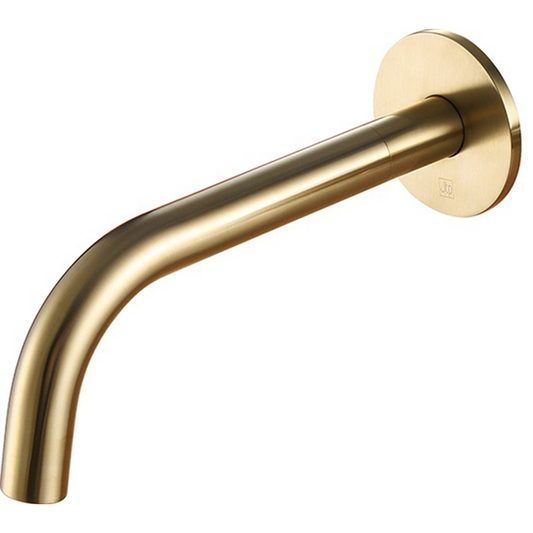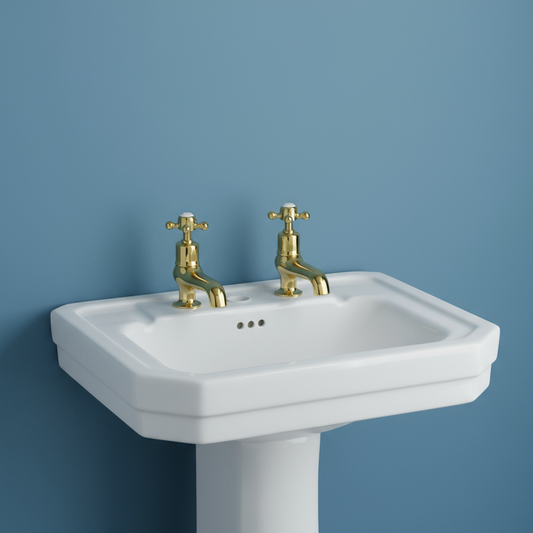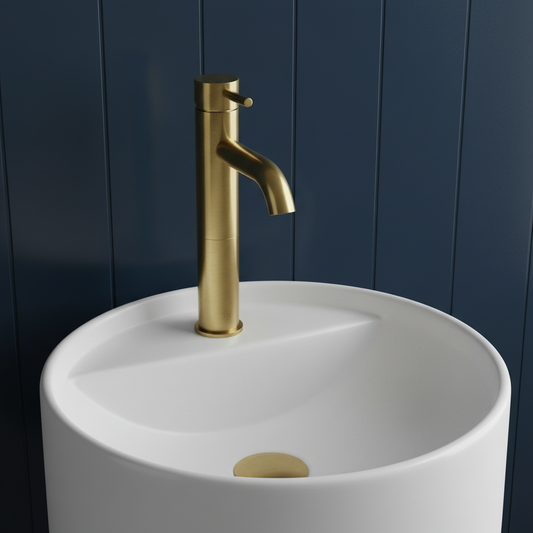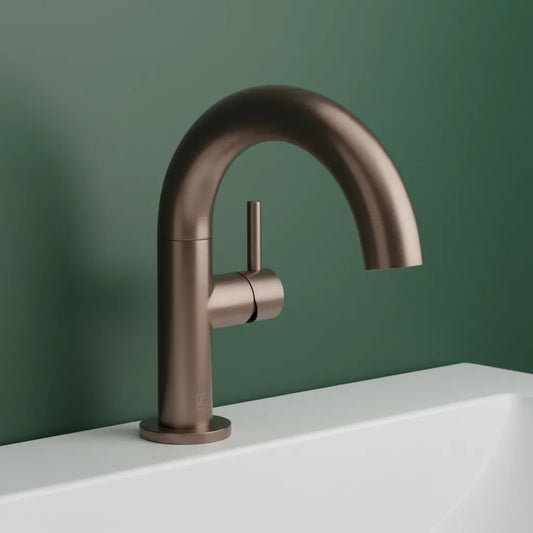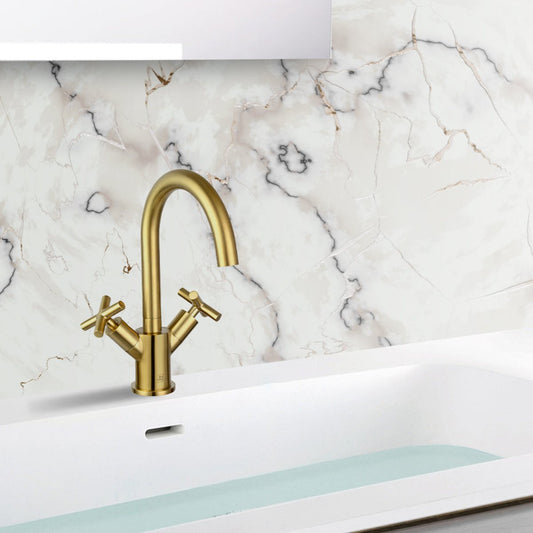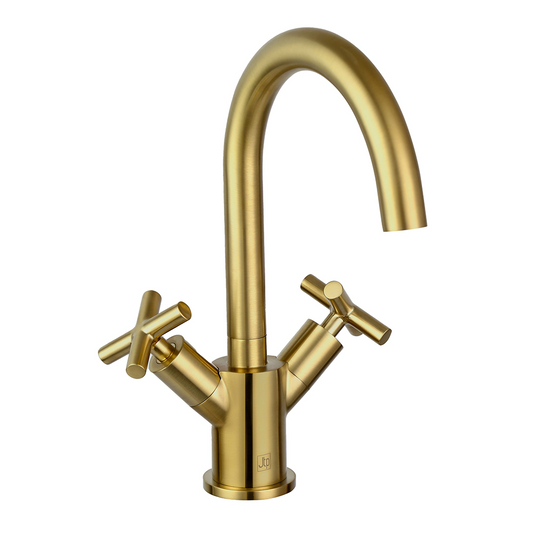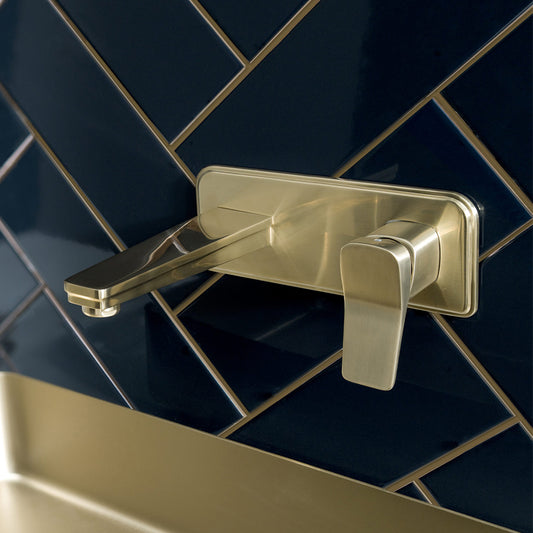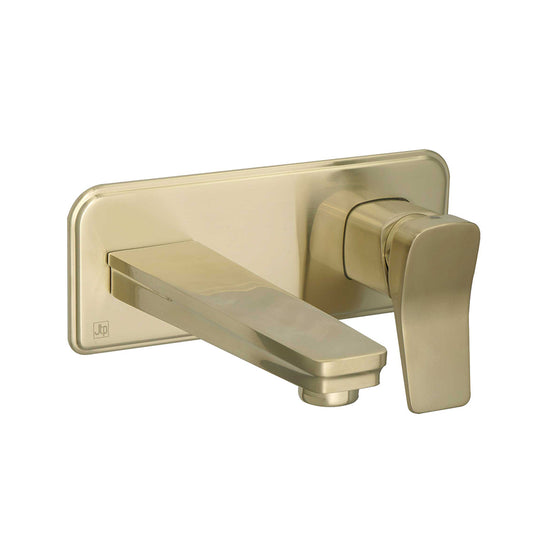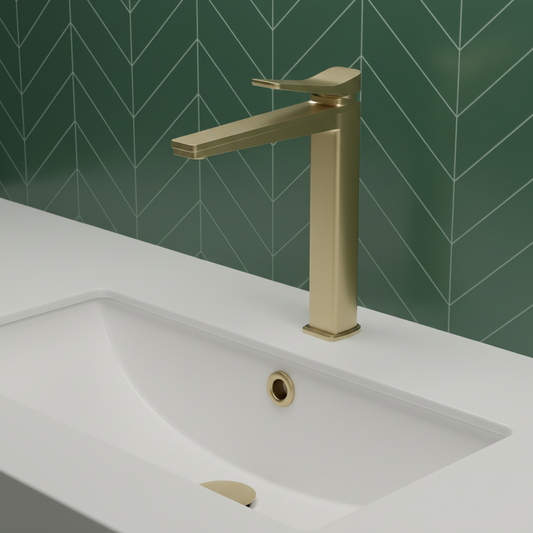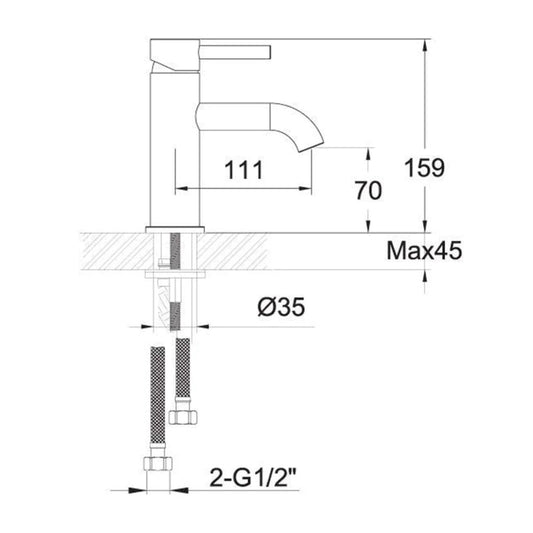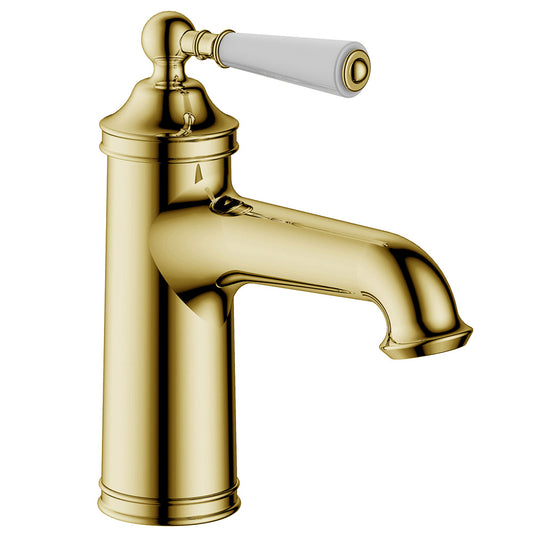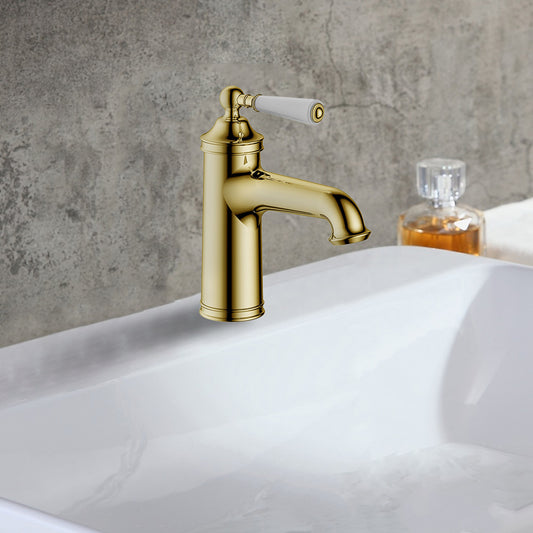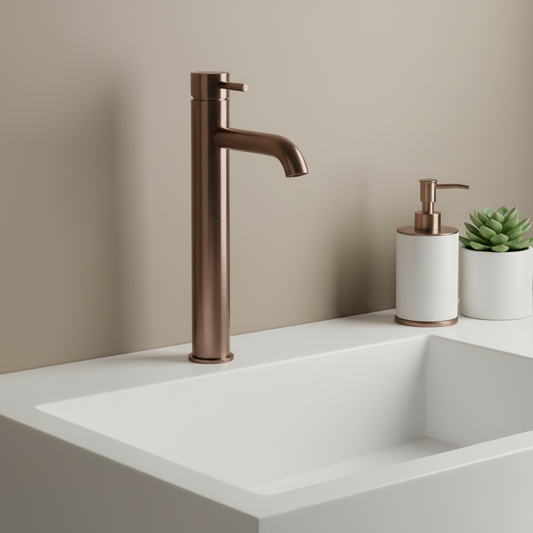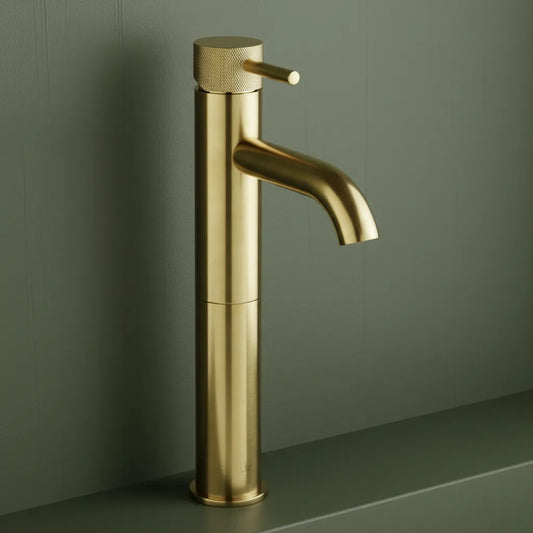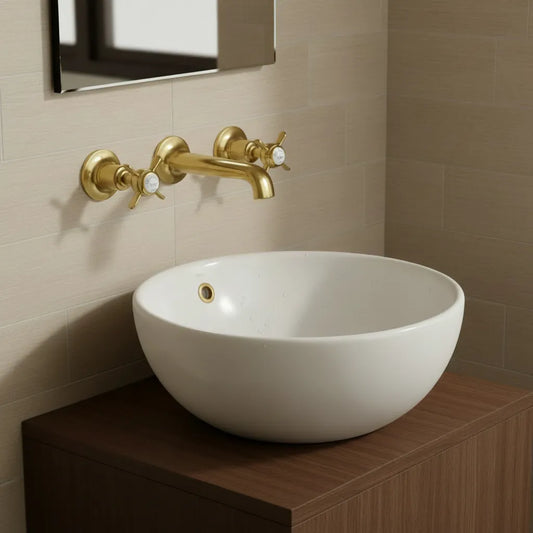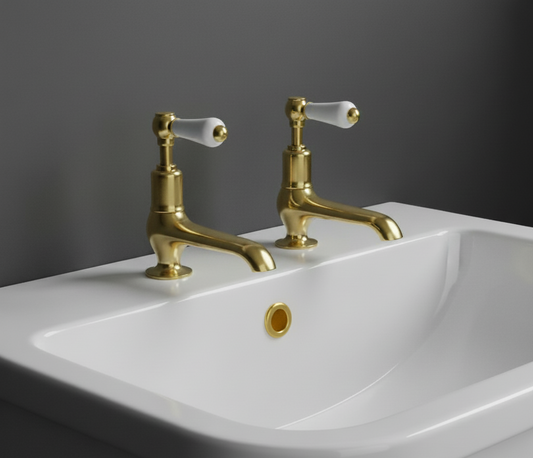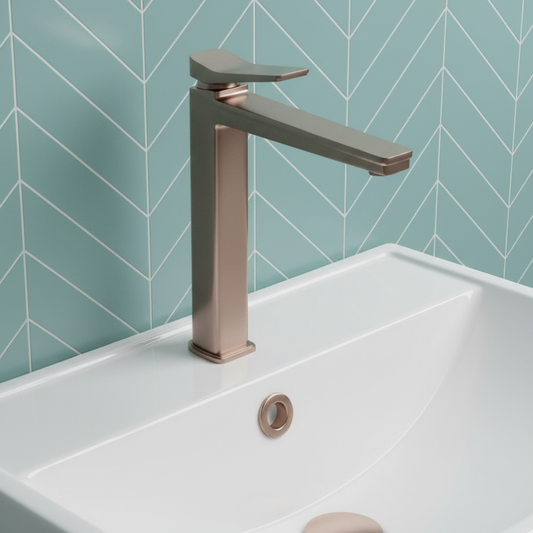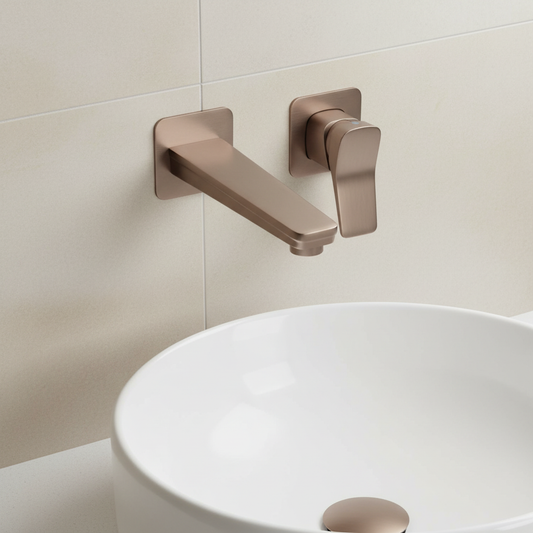How to Organize Your Kitchen to Reduce Stress
Table Of Contents:
-
Secret Kitchen Organisation Tips That Will Transform Your Cooking Experience and Reduce Stress
→ -
PullOut Kitchen Taps
→ -
Introduction to Kitchen Organization
→ -
Assess Your Kitchen Layout
→ -
Declutter and Simplify
→ -
Optimize Storage Solutions
→ -
Create Zones for Different Activities
→ -
Streamline Meal Prep and Planning
→ -
Incorporate Functional Kitchen Gadgets
→ -
Establish Routine Cleaning Habits
→ -
Utilise Labels and Containers
→ -
Maximise Counter Space
→ -
Design with Comfort in Mind
→ -
Evaluate and Adjust Regularly
→ -
Implementing Gold Kitchen Design Elements
→ -
Conclusion
→
Secret Kitchen Organisation Tips That Will Transform Your Cooking Experience and Reduce Stress
Transforming your kitchen into a well-organised, stress-free space is not just about aesthetics—it's about enhancing your daily cooking experience and overall well-being. Our blog stands out by offering a unique blend of practical tips and design insights to help you create a kitchen that’s both functional and stylish.
In this guide, you’ll learn how to streamline your kitchen layout, optimise storage, and incorporate efficient meal prep strategies. We’ll also delve into how integrating elegant design elements like gold accents can elevate your space, adding a touch of luxury while improving functionality.
Get excited to discover actionable strategies that will make your kitchen a haven of organisation and efficiency, all while maintaining a chic, sophisticated look.
Introduction to Kitchen Organization
A well-organised kitchen is essential for reducing stress and enhancing daily efficiency. When your kitchen is clutter-free and logically arranged, it creates a more enjoyable and streamlined cooking experience. The organisation of your kitchen can significantly impact your mental well-being; a chaotic, disordered space often leads to feelings of frustration and overwhelm, especially during busy meal times. An organised kitchen not only improves functionality but also fosters a more pleasant cooking environment, making meal preparation less of a chore and more of a pleasure.
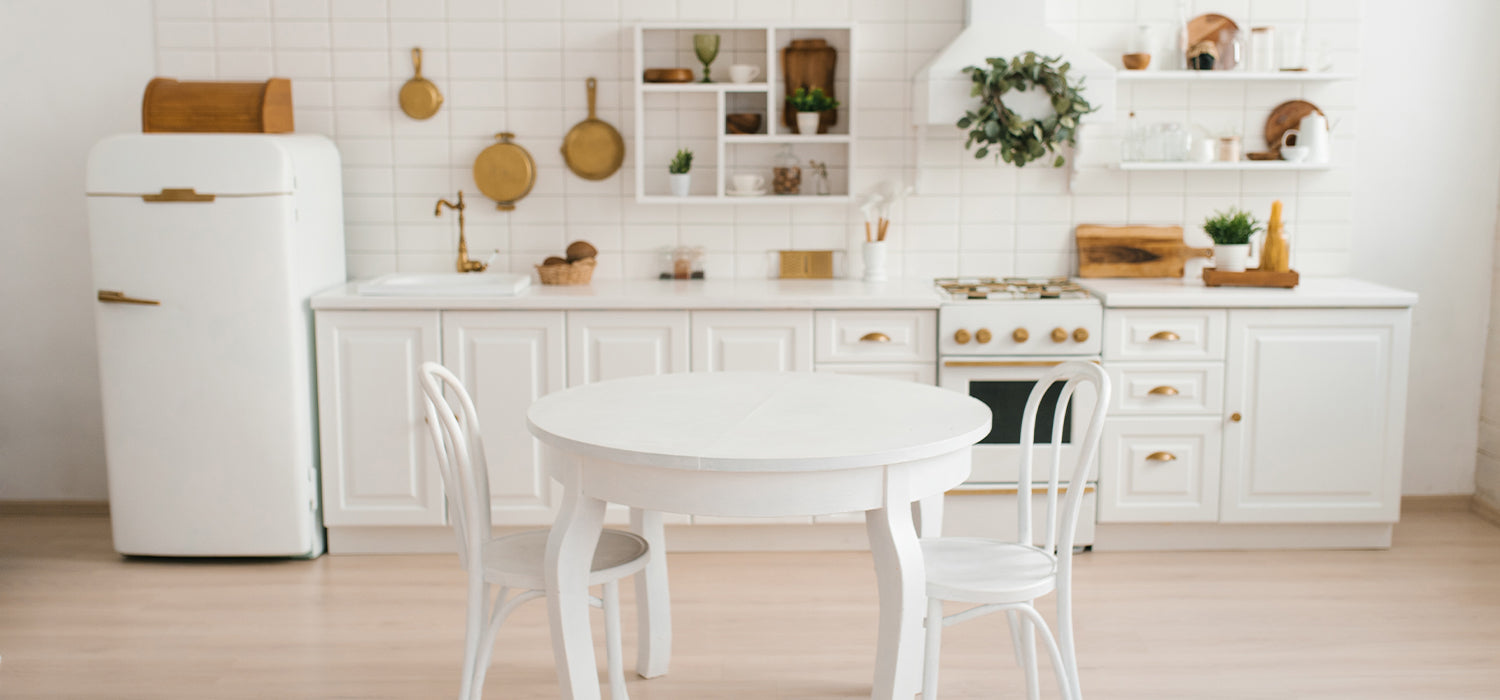
1. Assess Your Kitchen Layout
Evaluate the Current Kitchen Layout: Assessing your kitchen layout involves analysing how effectively the space supports your cooking and cleaning routines. Consider the arrangement of essential elements like the sink, stove, and refrigerator. An ideal layout minimises unnecessary movement and maximises efficiency. Look at the current placement of these elements to identify if they hinder or help your workflow. Poor layout choices can lead to inefficiencies, making cooking and cleaning more cumbersome. Identifying any design flaws or inefficiencies will guide you in making necessary adjustments to enhance overall functionality and streamline daily kitchen tasks.
Ensure Efficient Workflow: The “kitchen triangle” concept is pivotal for an efficient kitchen layout. This design principle involves positioning the sink, stove, and refrigerator in a triangular configuration to facilitate easy movement between them. This arrangement minimizes travel distance and maximizes productivity. Evaluate whether your current setup adheres to this principle or if adjustments are necessary. If you find that your workflow is interrupted or you have to travel long distances between these key areas, consider rearranging these elements. Proper alignment with the kitchen triangle can significantly enhance cooking efficiency and reduce the time spent in the kitchen.
Check for Ergonomic Design: Ergonomic design in the kitchen focuses on minimizing physical strain and maximizing comfort. This involves ensuring that countertops, cabinets, and appliances are at suitable heights for ease of use. For instance, counters should be at a comfortable height for food preparation to avoid back strain. Frequently used items should be within easy reach to prevent excessive bending or stretching. Assessing the ergonomics of your kitchen helps ensure that the space supports your physical needs, making daily tasks less strenuous. By making ergonomic adjustments, you can enhance both comfort and efficiency in your kitchen routine.
2. Declutter and Simplify
Remove Unnecessary Items: Clutter in the kitchen can create a sense of chaos and stress. Begin by removing items that are no longer used or needed, including broken appliances, duplicate utensils, and expired food. Clearing out these items not only frees up space but also contributes to a more serene environment. The process of decluttering involves evaluating each item’s usefulness and functionality. By systematically removing what is no longer essential, you make your kitchen more organized and manageable, leading to a more enjoyable cooking experience and a reduction in daily stress.
Implement the “Keep, Donate, Discard” Strategy: The “keep, donate, discard” strategy helps streamline the decluttering process. Start by sorting items into three categories: Keep the items you use regularly and are in good condition, Donate items that are still functional but no longer needed, and Discard items that are broken or expired. This method provides a structured approach to decision-making, making it easier to let go of items you don’t need. By focusing on this triage system, you can efficiently declutter your kitchen, resulting in a more organized and less stressful environment.
Simplify Your Kitchen Inventory: Simplifying your kitchen inventory involves evaluating and reducing the number of items you keep. This means assessing whether you need multiple versions of similar items, such as several sets of measuring cups or various cooking utensils. Streamline your collection by retaining only what is most practical and frequently used. This approach not only declutters your kitchen but also ensures that you have easy access to the tools you need without being overwhelmed by excess. By focusing on essentials, you create a more efficient and stress-free cooking environment.

3. Optimize Storage Solutions
Utilise Cabinets, Drawers, and Pantry Space: Effectively utilizing cabinets, drawers, and pantry space involves implementing organizational tools like dividers, shelves, and bins. Organizers can help separate and categorize items, making them easier to find and access. For example, shelf dividers keep plates and bowls upright, while drawer dividers can neatly organize utensils. Clear containers for pantry items help you see what’s inside without opening each one. By optimizing these storage areas, you maximize space and maintain an organized kitchen, which contributes to a more efficient cooking process and reduces stress.
Invest in Smart Storage Solutions: Investing in smart storage solutions can greatly enhance kitchen organization. Options such as pull-out racks,and adjustable shelves help maximise space and improve accessibility. Pull-out racks make it easier to reach items in deep cabinets. Adjustable shelves can be moved to accommodate different sizes of items, providing flexibility. These smart storage solutions ensure that every inch of your kitchen space is used effectively, leading to a more organized and stress-free environment.
Optimize Pantry Organization: Optimizing pantry organization involves using clear containers and labels to manage food storage efficiently. Clear containers allow you to quickly identify contents without opening each one, while labels help you track expiration dates and contents. Organize your pantry items by category, such as baking supplies, canned goods, and snacks, to make finding what you need easier. Stackable bins or tiered racks can help you utilize vertical space effectively. Proper pantry organization not only keeps your kitchen tidy but also reduces the time spent searching for ingredients, thereby reducing stress.
Create Dedicated Storage Areas: Creating dedicated storage areas involves organizing your kitchen into specific zones for different tasks, such as food prep, cooking, and baking. Assign particular cabinets, drawers, or shelves to these functions to streamline your workflow. For example, keep all your baking tools and ingredients in one place, and store cooking utensils near the stove. This zoned approach ensures that items are easily accessible and reduces the time spent looking for what you need. By having dedicated areas for different kitchen activities, you enhance efficiency and reduce stress during meal preparation.
4. Create Zones for Different Activities
Designate Specific Areas: Organising your kitchen into distinct zones for various activities optimizes functionality and reduces stress. By creating specific areas for different tasks, you streamline your cooking process, making it more efficient and less chaotic.
Food Prep Zone: This area should be dedicated to all activities related to preparing ingredients for cooking. Equip this zone with essential tools such as cutting boards, chef’s knives, vegetable peelers, mixing bowls, and measuring cups. By grouping these items together, you minimize the time spent searching for them and make the prep work smoother. Place the prep zone near the sink and refrigerator for easy access to washed ingredients and chilled items.
Cooking Zone: This zone is centered around the stove and oven. It should include all cooking utensils like spatulas, ladles, tongs, and pots and pans. Organize spices, cooking oils, and other seasonings in a nearby drawer or rack. This setup reduces the need to run back and forth between different parts of the kitchen, making the cooking process more seamless.
Baking Zone: If you bake frequently, designate a specific area for baking activities. Store baking essentials like flour, sugar, baking powder, measuring spoons, and mixing bowls in this zone. Consider including a stand mixer or a hand mixer, as well as cooling racks. Having these tools and ingredients in one place makes baking tasks more manageable and enjoyable.
Cleaning Zone: This area includes the sink, dishwasher, and cleaning supplies. Keep dish soap, sponges, dish towels, and cleaning agents close by. A well-organized cleaning zone ensures that post-meal cleanup is efficient, helping you maintain a tidy kitchen with minimal effort.
Organise Tools and Ingredients by Use: Within each designated zone, arrange tools and ingredients based on their specific use. For instance, in the food prep zone, place frequently used items like knives and cutting boards in easily accessible locations. Store less commonly used items in higher cabinets or drawers. In the cooking zone, group spices and oils together in a way that allows you to grab them quickly while cooking.
5. Streamline Meal Prep and Planning
Plan Meals Ahead of Time: Meal planning involves organizing your meals for a set period, usually a week. By planning ahead, you can simplify your grocery shopping and reduce the stress associated with last-minute meal decisions.
Weekly Meal Plan: Create a weekly menu that includes breakfast, lunch, dinner, and snacks. Incorporate a variety of recipes to ensure balanced nutrition and keep mealtime interesting. Consider dietary preferences and any special occasions or events.
Shopping List: Based on your meal plan, generate a detailed shopping list that includes all necessary ingredients. Organize the list according to grocery store sections (produce, dairy, pantry items) to streamline your shopping experience. This prevents multiple trips to the store and reduces the chances of forgetting essential items.
Use Meal Prep Techniques: Meal prep involves preparing ingredients or entire meals in advance to make daily cooking easier. Effective meal prep techniques save time and reduce the stress of cooking on busy days.
Batch Cooking: Cook large quantities of staple foods such as rice, beans, or roasted vegetables at once. Store these items in individual portions in the refrigerator or freezer. Batch cooking allows you to quickly assemble meals throughout the week.
Pre-Chopped Ingredients: Chop vegetables, fruits, and herbs ahead of time and store them in airtight containers. This pre-preparation reduces the time required for cooking and ensures that ingredients are ready when needed.
Freezer Meals: Prepare and freeze complete meals or components (like sauces or soups). Label and date the containers to keep track of what’s inside. Freezer meals are a convenient option for days when you’re too busy to cook from scratch.
6. Incorporate Functional Kitchen Gadgets
Invest in Efficiency-Enhancing Gadgets: Functional kitchen gadgets are designed to make cooking tasks easier and more efficient. Investing in high-quality tools can streamline your cooking process and enhance your overall kitchen experience.
High-Quality Knives: Sharp, well-maintained knives are essential for efficient food prep. Invest in a good set of chef’s knives, paring knives, and serrated knives. Keep them sharpened to ensure precision and ease of use.
Food Processors: A food processor can handle a range of tasks, including chopping, slicing, grating, and pureeing. It saves time by performing tasks that would otherwise require manual effort. Look for models with various attachments for versatility.
Multi-Purpose Appliances: Appliances like slow cookers, pressure cookers, and immersion blenders offer multiple functions. For example, a pressure cooker can speed up cooking times, while a slow cooker is ideal for hands-off meal preparation. Choose appliances that fit your cooking style and needs.
7. Establish Routine Cleaning Habits
Develop Daily and Weekly Routines:
Daily Cleaning Tasks: To maintain a clean and organized kitchen, it's essential to establish daily cleaning habits. Start by making it a habit to wash dishes promptly after meals. This prevents dishes from piling up and ensures that your kitchen remains clutter-free. Wipe down countertops and stovetops every day to remove crumbs, spills, and stains. Keeping these surfaces clean not only improves the kitchen’s appearance but also reduces the buildup of grime that can become more difficult to clean over time.
Weekly Cleaning Tasks: In addition to daily chores, implement weekly cleaning routines. This includes tasks like cleaning appliances (e.g., refrigerator, microwave, oven) and organizing pantry shelves. Dedicate time each week to sweep and mop the floors, clean the sink, and empty the trash. These tasks help prevent messes from accumulating and ensure that your kitchen remains in good condition.
Prevent Messes from Accumulating: Regular cleaning helps prevent small messes from turning into larger, more overwhelming tasks. By staying on top of cleaning duties, you minimize the effort required for deep cleaning and create a more pleasant cooking environment. Consistency in cleaning routines is key to maintaining a stress-free kitchen.
8. Utilise Labels and Containers
Label Pantry Items:
Labeling pantry items is a practical way to keep your kitchen organized and efficient. Use clear labels to identify the contents of each container, which helps prevent confusion and ensures you can easily find what you need. This is particularly useful for dry goods, spices, and grains that may look similar but have different uses.
Labels also assist in managing inventory by making it easier to track expiration dates and usage. By knowing what you have on hand, you can avoid buying duplicates and reduce food waste. Labels help maintain an organized pantry and streamline meal preparation.
Use Transparent Containers:
Storing food in transparent, airtight containers is an effective way to keep items fresh and visible. Clear containers allow you to see the contents at a glance, making it easier to find ingredients quickly. This visibility reduces the likelihood of forgetting about items and ensures that you use them before they expire.
Organization Tips: Use containers of various sizes to accommodate different types of food and ingredients. For example, large containers for flour and sugar, and smaller ones for spices and nuts. Group similar items together to make finding them easier and to keep your pantry tidy.

9. Maximise Counter Space
Keep Countertops Clear:
Keeping countertops clear of unnecessary items is crucial for creating an efficient and stress-free kitchen workspace. A clutter-free counter provides ample space for meal preparation, cooking, and other kitchen activities. It also helps in maintaining a visually appealing and organized environment.
How to Achieve This: Only keep essential items on the counter, such as a cutting board, knife block, and frequently used appliances. Store less frequently used items in cabinets or drawers. Regularly declutter countertops by putting away items that are not needed for immediate tasks.
Use Wall-Mounted Storage:
Wall-mounted shelves or racks are excellent solutions for maximizing counter space. By using vertical storage, you can free up valuable counter area and keep frequently used items accessible without taking up counter space. Wall-mounted shelves can hold spice jars, cookbooks, or kitchen utensils, while racks can accommodate pots, pans, or mugs.
Install shelves or racks at an appropriate height to ensure they are easily reachable. Consider using decorative wall-mounted storage solutions to add both functionality and style to your kitchen. Ensure that the mounted storage is securely fastened to avoid accidents.
10. Design with Comfort in Mind
When designing your kitchen, comfort should be a primary consideration to ensure that the space is not only functional but also enjoyable to use. Here’s how to achieve this:
Check for Ergonomic Design: Ergonomic design in the kitchen focuses on minimizing physical strain and maximizing comfort. This involves ensuring that countertops, cabinets, and appliances are at suitable heights for ease of use. For instance, counters should be at a comfortable height for food preparation to avoid back strain. Frequently used items should be within easy reach to prevent excessive bending or stretching. Assessing the ergonomics of your kitchen helps ensure that the space supports your physical needs, making daily tasks less strenuous. By making ergonomic adjustments, you can enhance both comfort and efficiency in your kitchen routine.
Ensure Adequate Lighting: Proper lighting is crucial for a comfortable and functional kitchen. Install bright, well-placed lighting to illuminate work areas and make the kitchen more inviting. Consider a combination of task lighting, such as under-cabinet lights or pendant lights over work surfaces, and ambient lighting to create a well-lit environment. Good lighting improves visibility, reduces eye strain, and creates a pleasant atmosphere, making it easier to prepare meals and navigate the kitchen.
11. Evaluate and Adjust Regularly
Maintaining an organized and functional kitchen requires ongoing assessment and adjustments. Here’s how to keep your kitchen in top shape:
Periodically Assess Organization: Regularly evaluate how well your kitchen organization strategies are working. This involves reviewing the efficiency of your current setup, checking if storage solutions are still effective, and ensuring that your kitchen layout continues to meet your needs. Consider factors such as ease of access to frequently used items and whether any new appliances or tools have disrupted your existing organization. Periodic assessments help you identify areas for improvement and ensure that your kitchen remains efficient and stress-free.
Stay Adaptable: As your needs and routines evolve, be willing to adapt your kitchen organization and design. For instance, if you start meal prepping more frequently, you may need to reconfigure storage to accommodate new ingredients or tools. Similarly, if your family grows or your cooking habits change, adjust your kitchen layout and storage solutions accordingly. Flexibility allows you to maintain an organized space that continues to support your lifestyle and preferences.

12. Implementing Gold Kitchen Design Elements
Incorporating gold design elements into your kitchen can transform it into a sophisticated and elegant space. Gold accents, such as faucets, cabinet handles, and light fixtures, introduce a touch of luxury and warmth that elevates the overall aesthetic. When choosing gold fixtures, opt for finishes that complement your existing color scheme—gold pairs beautifully with classic tones like navy blue, black, or white, creating a balanced and refined look. Subtle gold touches can be strategically placed in key areas such as backsplashes, countertops, or cabinetry to enhance visual interest without overwhelming the space.
To achieve a cohesive design, consider mixing gold elements with other high-quality materials like marble, wood, or stainless steel. This blend of textures adds depth and sophistication while maintaining practicality. For example, a marble countertop with gold-veined accents can harmonize beautifully with gold cabinet handles or a gold faucet. By carefully selecting and placing gold design elements, you can create a kitchen that exudes elegance and charm, making it both a stylish and functional space.
Conclusion
Are there areas that could use a little more organization? Perhaps it’s time to introduce some new storage solutions or refresh your meal planning routine. Remember, the goal is to create a kitchen that not only looks fantastic but also enhances your daily cooking experience.
What changes are you excited to make in your kitchen? If you have any questions or need more advice, feel free to reach out—let’s make your kitchen the heart of your home, where every meal is a pleasure and every moment is stress-free!




